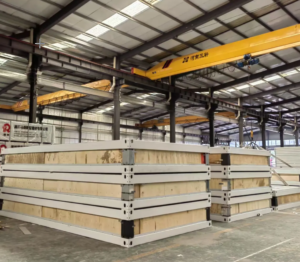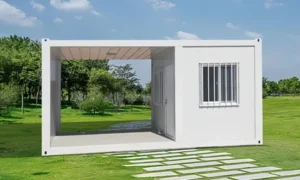Container homes are among the most adopted forms of housing because they are affordable, unique, and environmentally friendly. Nevertheless, one of the main obstacles in transforming a shipping container into a cozy dwelling is its insulation. Insulation is crucial in maintaining a particular temperature within a space, avoiding condensation, and conserving energy. In this article, we guide you through the process to effectively insulate a shipping container house.
Why Insulate a Shipping Container Home?
Shipping containers are made of steel, which conducts heat and cold rapidly. Without proper insulation, your container home can become unbearably hot in summer and freezing in winter. Additionally, steel surfaces are prone to condensation, which can lead to mold and rust. Insulation helps:
- Regulate indoor temperature
- Reduce energy costs
- Prevent condensation and moisture buildup
- Improve soundproofing
Methods of Insulation for Container Homes
1. Spray Foam Insulation
Spray foam is widely regarded as the best method of insulation for containers as it seals gaps to give an airtight fit. It is ideal for shipping containers due to its prefab nature.
- Pros: Moisture barrier, structural reinforcement, and high R-value.
- Cons: Professional installation and expensive.
2. Fiberglass Batts
Fiberglass batts are widely used due to their easy availability and affordability, making them very cost-effective.
- Pros: Simple to install, affordable, and widely available.
- Cons: Polystyrene or polyisocyanurate rigid foam boards are very light and easily cut to required dimensions
3. Rigid Foam Boards
Polystyrene or polyisocyanurate rigid foam boards are very light and easily cut to required dimensions
- Pros: Moisture resistant, easy to install, and high R value.
- Cons: Rigid foam is more expensive than fiberglass.
4. Reflective Insulation
Reflective barriers help in reflecting heat away from the container, so this type of insulation is extra useful in hotter climates.
- Pros: Simple to install and useful in hot weather.
- Cons: Less effective during cold weather and need to be placed at a distance from the wall.
5. Natural Insulation (Sheep Wool, Cork, etc.)
Less effective during cold weather and need to be placed at a distance from the wall.
- Pros: Breathable and environmentally friendly.
- Cons: More expensive and needs extra treatments for moisture barriers.
Step-by-Step Guide to Insulating a Shipping Container Home
1. Plan Your Insulation Strategy
- Decide on the type of insulation based on your climate, budget, and desired R-value.
- Consider whether you’ll insulate the interior, exterior, or both.
2. Prepare the Container
- Clean the interior and exterior surfaces thoroughly.
- Repair any rust or damage to the container.
- Apply a rust-resistant primer to protect the steel.
3. Install a Vapor Barrier
- A vapor barrier is essential to prevent condensation. Install it on the warm side of the insulation (interior in cold climates, exterior in hot climates).
4. Install the Insulation
- For spray foam, hire a professional to ensure even application.
- For fiberglass or rigid foam, cut the material to fit snugly between wall studs or frames.
- Use adhesive or mechanical fasteners to secure the insulation in place.
5. Seal Gaps and Joints
- Use caulk or foam sealant to fill any gaps around windows, doors, and corners.
- Ensure airtightness to maximize energy efficiency.
6. Finish the Walls
- Cover the insulation with drywall, plywood, or another finishing material.
- For exterior insulation, consider cladding options like wood or metal panels.
Tips for Effective Insulation
- Ventilation: Install vents or a mechanical ventilation system to prevent moisture buildup.
- Thermal Bridging: Use thermal breaks (e.g., wooden studs) to minimize heat transfer through the steel frame.
- Climate Considerations: Choose insulation materials and methods suited to your local climate.
Conclusion
It is very important to insulate a shipping container home, as it helps make the house comfortable and energy efficient. Selecting an improper insulating material and using the wrong techniques can make it difficult to convert an ordinary steel container into a sustainable home. It is best to select spray foam, fiberglass, or natural insulation while ensuring there is room for proper planning to overcome condensation and thermal bridging problems.
Ready to start your shipping container home project? Contact Weifang Carter today for expert advice and high-quality container solutions!
Contact Us:
Weifang Carter
- Alibaba International Site: Carter House on Alibaba
- WhatsApp: +86-13081655379
- Email: admin@carteroom.com
By following this guide, you’ll be well on your way to creating a shipping container home that’s not only stylish but also comfortable and energy-efficient. Happy building!




